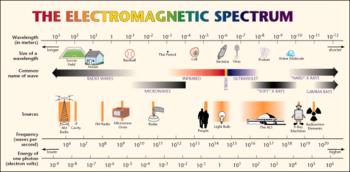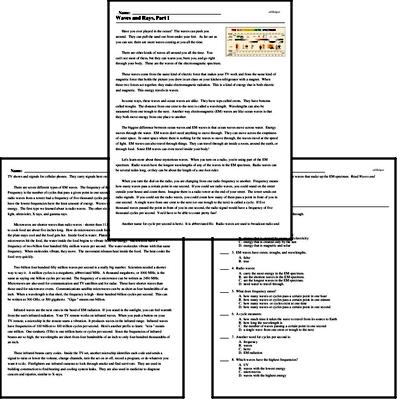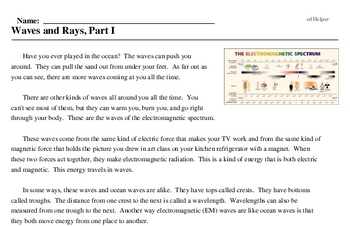Waves and Rays, Part I
Have you ever played in the ocean? The waves can push you around. They can pull the sand out from under your feet. As far out as you can see, there are more waves coming at you all the time.
There are other kinds of waves all around you all the time. You can't see most of them, but they can warm you, burn you, and go right through your body. These are the waves of the electromagnetic spectrum.
These waves come from the same kind of electric force that makes your TV work and from the same kind of magnetic force that holds the picture you drew in art class on your kitchen refrigerator with a magnet. When these two forces act together, they make electromagnetic radiation. This is a kind of energy that is both electric and magnetic. This energy travels in waves.
In some ways, these waves and ocean waves are alike. They have tops called crests. They have bottoms called troughs. The distance from one crest to the next is called a wavelength. Wavelengths can also be measured from one trough to the next. Another way electromagnetic (EM) waves are like ocean waves is that they both move energy from one place to another.
The biggest difference between ocean waves and EM waves is that ocean waves move across water. Energy moves through the water. EM waves don't need anything to move through. They can move across the emptiness of outer space. In outer space where there is nothing for the waves to move through, the waves travel at the speed of light. EM waves can also travel through things. They can travel through air inside a room, around the earth, or through food. Some EM waves can even travel inside your body!



